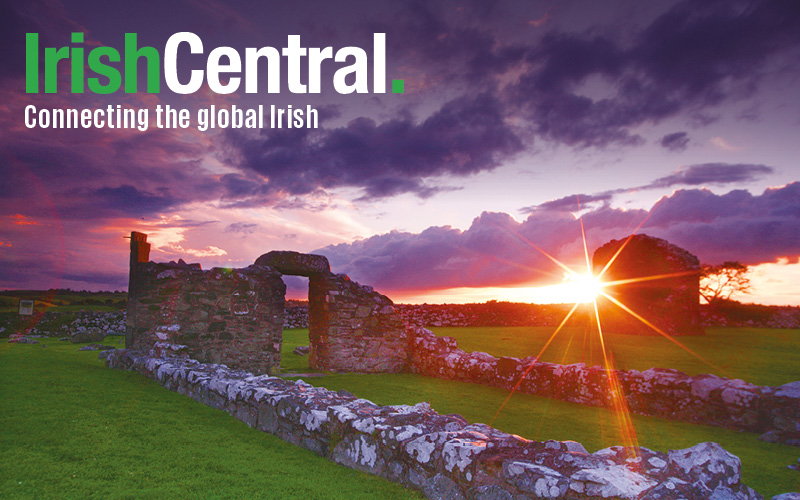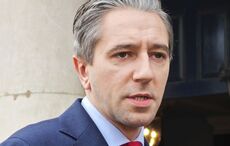Several 'Eleventh Night' bonfires in Northern Ireland were condemned yesterday for burning the election posters of MLAs from nationalist parties, as well as flying Irish tricolors and featuring messages about 1916.
A bonfire in Portadown, Co. Armagh, showed the messages “IRA” and “1916” being set alight alongside election posters belonging to Sinn Féin politicians Catherine Seeley and John O’Dowd.
Both Seeley and O’Dowd were quick to condemn the action with Seeley stating she would report the “blatant hate crime”.
.@JohnODowdSF and I will be reporting this for the blatant hate crime that it is pic.twitter.com/R6XGLbtZPA
— Catherine Seeley (@CatSeeley) July 9, 2016
“The event, as I understand, was billed as a children’s fun day,” O’Dowd told Independent.ie
“It is totally unacceptable that these stolen posters appeared on the bonfire, especially in the context of an event which was supposed to be a children’s fun day, what message does the burning of images of elected representatives send out to children?”
These are images from a " Children's Fun Day & Bonfire" in Portadown. What messages does this give to young minds? pic.twitter.com/CdO9yZ8o8K
— John O' Dowd (@JohnODowdSF) July 10, 2016
“The posters burnt were stolen during the election campaign and were reported as such,” he continued. “This incident and the burning of posters and flags at the main bonfire later in the evening have been reported to the police as theft and a hate crime.”
A further bonfire site in Killyleagh featured posters of SDLP councillor Joe Boyle and Alliance MLA Kellie Armstrong, spotted by Downpatrick Alliance councillor Patrick Brown.
“Shameful to see Alliance and SDLP posters and tricolours on the bonfire in Killyleagh,” Brown wrote. “How can this be described as ‘culture’?”
North Belfast bonfires also featured images of Sinn Féin MLAs Caral Ni Chuilin and Gerry Kelly, as well as SDLP MLA Nichola Mallon.
Ulster Unionist MP Danny Kinahan was criticized for being photographed on Monday in front of a similar bonfire in Ladyhill on which a tricolor was placed.
Kinahan was photographed posing in front of the pyre while holding a check for charity. Later he posted the picture to Twitter. Kinahan apologized yesterday, accepting that it was an error in judgment.
"What I wanted to get across was here was a family, rural bonfire scene and they'd raised £600 [$663] for meningitis,” he told BBC’s "Good Morning Ulster."
"They were having fun and this is Protestant culture – let's recognize each other's cultures and get on with it.
"I should have had the flag taken down before the photograph, but it's really to get the point across – let's recognize each other's cultures. Let's look after them, be tolerant and let's get on and enjoy our lives."
Well done Ladyhill Bonfire Group .. Donation to Meningitis NI .. & great turnout from families and local groups pic.twitter.com/tsQug6nPp5
— Danny Kinahan (@DdeBK) July 11, 2016
The Eleventh Night bonfires are a tradition throughout loyalist areas in Northern Ireland where bonfires are lit and street parties are often held the night before July 12, the most important day in the marching calendar which marks the Orange Order's commemoration of the victory of Protestant William of Orange over Catholic James II in the Battle of the Boyne in 1690.
The tradition is believed to have started to commemorate the lighting of fires on hilltops in Antrim and Down that helped Williamite forces navigate through the Belfast Lough at night during the Williamite Wars in Ireland.
This is not the first time the burning of election posters has been condemned as “inciting hatred.” Symbols of Irish nationalism, republicanism or of Catholicism have often been added to the pyre, although moves have been made in recent years to remove the sectarian element of the bonfires.
The bonfires have also been criticized for environmental harm they may cause, with a ban placed on the burning of tires due to pollution. There were still reports of tires being burnt at this year’s bonfires, however, and the Northern Ireland Environment Agency said they have issued five $398 [£300] fines for dumping at bonfires over the past few months.
On Monday night, two houses were gutted by fire and a third was damaged in the Shankill area of Belfast when burning embers were carried through the air.
"We believe there could have been the potential for hot burning embers being carried by wind landing on the roof and then making their way down and falling into the roof," said Alan Walmsley of the Northern Ireland Fire and Rescue Service.
A man who lives in one of the houses was home with his young daughter when he heard “crackling sounds” upstairs in the property. Speaking to the BBC he said, "I heard what sounded like rustling up the stairs. So I went up into the attic to see what was happening and I saw the smoke.”
"The house is destroyed. "My bedroom ceiling is bulging like it's about to come in. It's not safe to be in."
An elderly woman and her great-granddaughter were in the second home that was destroyed while a young, pregnant woman was in the third, which was damaged by the fire.
Roof on fire at Shankill #bonfire #EleventhNight #NINews pic.twitter.com/Q1Eov9re1e
— claire williamson (@clairewilliam22) July 12, 2016
In total, the Northern Ireland fire service was called 123 times from 6pm on Monday evening. Of these, 42 were to bonfires and firefighters were forced to intervene with the fire on 16 occasions.
Many of those who criticize the Eleventh Night bonfires believe that they are magnets for anti-social behavior while those who defend them believe they are a family-friendly celebration of loyalist culture.
According to data recently compiled by the Irish News, the Twelfth of July results in similar crime leves to those around St. Patrick’s day, a day that could be seen as the rival nationalist holiday.
Looking through crime statistics for the period between 2009 and 2015, the Irish paper found that while the Twelfth came out out on top for crime when taken as a single day only (405 offenses to St .Patrick’s 379), St. Patrick’s Day featured more crime when studied over a 36-hour period surrounding the event.
Culture and controversy – Bonfires will be lit across Northern Ireland for #EleventhNight #Twelfthhttps://t.co/k9oG6jFcNV
— BBC News NI (@BBCNewsNI) July 11, 2016
Irish Republican flags burn as #EleventhNight bonfires blaze across N.Ireland https://t.co/0dG3Zy7SpF pic.twitter.com/QdkpN7YOqA
— Ruptly (@Ruptly) July 12, 2016




Comments